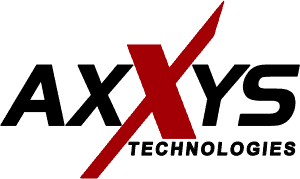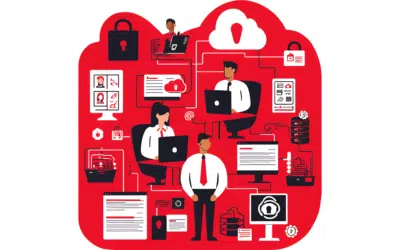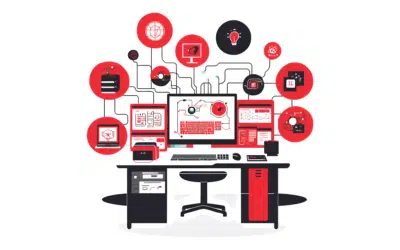 Time has a way of sneaking up on us. Despite the flow of time being one of the most dependable things in life, it can still come as a shock to find out that the fax machine was invented the same year people were traveling the Oregon Trail, or that there is more processing power in a modern graphing calculator than in the computer that landed Apollo 11 on the moon.
Time has a way of sneaking up on us. Despite the flow of time being one of the most dependable things in life, it can still come as a shock to find out that the fax machine was invented the same year people were traveling the Oregon Trail, or that there is more processing power in a modern graphing calculator than in the computer that landed Apollo 11 on the moon.
So if the fact that half of the year is already over surprises you, don’t worry. Now is the perfect time for you to take stock of your IT business plans, adjust to new mid-year developments, and make sure you’re ready to meet your goals. To help you finish strong in 2015, here are five fast, high-impact ways to address your pressing tech needs.
1. Stay on top of storage
With business growth comes greater storage needs. And while it may be tempting to simply throw hard drives at the problem, new hybrid storage solutions are a fast, affordable, and flexible option for businesses.
Combining data stored on local servers with a cloud backup solution can help you provide the security and high availability of a local solution, management simplicity and compliance archiving options with the disaster recovery and global access potential of the cloud.
2. Migrate off of Microsoft Windows Server 2003
The time has come to migrate to Windows Server 2012. Microsoft is discontinued support of Windows Server 2003 on July 14, 2015, and the risk inherent in running legacy infrastructure and unsupported, unsecure, and non-compliant software is too great to ignore. Consider updating your servers at the same time with HP ProLiant or 3PAR servers, designed with the performance and scalability needed to keep pace with your growing business.
The upgrade doesn’t have to be disruptive. Up to a 90-day deferral can help you during any dual-use period as you migrate, while a qualifying HP Server 0% Tech Refresh Offer can provide a low monthly payment plan for your entire solution to help you stay within your budget.
3. Save on printing costs
When IT budgets are tight, one area where many businesses can save is in printing costs. The average office worker prints 10,000 pages per year—approximately 40 pages per day. Assuming each sheet costs around 10 cents to print, that’s $1,000 of print costs per head, per year. Reducing that cost by up to 30 percent means that a 1,000-employee company can easily save $30,000 per year.
4. Secure your network printers
Network printers offer unprecedented efficiency and convenience, but they can also pose the same security threats as PCs and mobile devices if left unprotected. According to McAfee, half of employees say they’ve copied, scanned, or printed confidential information at work. That’s a big potential risk to your proprietary data, and can often be overlooked when expanding your printing and imaging fleet.
The first of its kind, HP Imaging and Printing Security Center can help secure your current printers and MFPs. This fleet-level solution makes it easy to apply an effective, policy-based security approach, streamline deployment and monitoring, and quickly scale to your needs.
5. Minimize upfront expansion costs
PCs more than four-and-a-half years old are estimated to cost 50 percent more to support and take 50 percent longer to perform many tasks. But it can be difficult for many businesses to invest suddenly in IT upgrades, especially when the needs are unexpected. By moving your costs from capital expenditures to operating expenditures, you can better manage your growth and make your IT budget more predictable.
Plan ahead
Less than 10 percent of action plans effectively formulated are effectively executed. That might not seem like an encouraging figure, but it also means that the 10 percent of organizations that do effectively execute their strategy have a huge competitive advantage. Staying flexible and adjusting your plans to the current situation will help you accomplish your end-of-year IT goals with minimal surprises.








